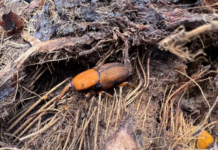Sunflower is a versatile crop that thrives in various climates and soil types, and which is known for its high yield and adaptability. While sunflowers can withstand moderate drought due to their deep root system, the plants are sensitive to drought and heat stress during the flowering and grain-filling stages.
Environmental factors such as air temperature, day length, solar radiation, and rainfall affect the growth and development of sunflower. Fluctuations in air temperature and moisture availability influence the quantity and quality of oil accumulation in sunflower seeds. High air temperatures during grain filling can reduce seed oil concentration, while delayed grain filling due to later planting dates can also lead to lower oil concentrations. Additionally, drought stress has been shown to reduce seed and oil yield and other essential yield traits in sunflower.
Cultural practices, including land preparation, planting timing, and pest control, significantly affect sunflower productivity. Among these practices, planting date is crucial as it can influence the environmental conditions experienced by the crop during its life cycle, affecting growth, yield, and seed quality.
In South Africa, sunflower is typically planted from November to mid-January, with the Free State and North West being the main cultivation areas. Unpredictable adverse weather conditions during the production season can significantly impact seed yield and oil content.
The aim of this study was to investigate the impact of planting dates on sunflower seed yield, oil content, and oil yield and to recommend optimal planting dates for producers.
Research conducted
A total of 24 field trials were conducted during the 2022 to 2024 growing seasons to determine the effect of planting dates on seed yield, oil content, and oil yield.
Twelve field trials were established at the ARC-Grain Crops’ Potchefstroom research farm in North West, while seven field trials were established at the ARC-Small Grains’ Bethlehem research farm in the eastern Free State and five at Steynsrus (a producer’s field in the northern Free State). The trials at each site had different planting dates, ranging from late October to the end of January. The following hybrids were planted at the three sites: AGSUN 5106 CLP, AGSUN 5270, AGSUN 8251, P 65 LP 65, PAN 7080, PAN 7180 CLP, and SY 3970 CL. Responses were studied in a randomised complete block design with three replications.
Each plot measured 10 m x 4,6 m and comprised six rows at a 0,9-m row spacing for each hybrid. After maturity, two rows with a length of 8 m were harvested by hand to measure the grain yield per plot. Grain yield was measured and corrected at 9% moisture content. Sunflower seed samples were taken from each subplot for oil analysis on an ‘as is’ basis. Statistical analysis was carried out on the available data, including ANOVA and post-hoc tests, to determine significant differences among planting dates and hybrids.








